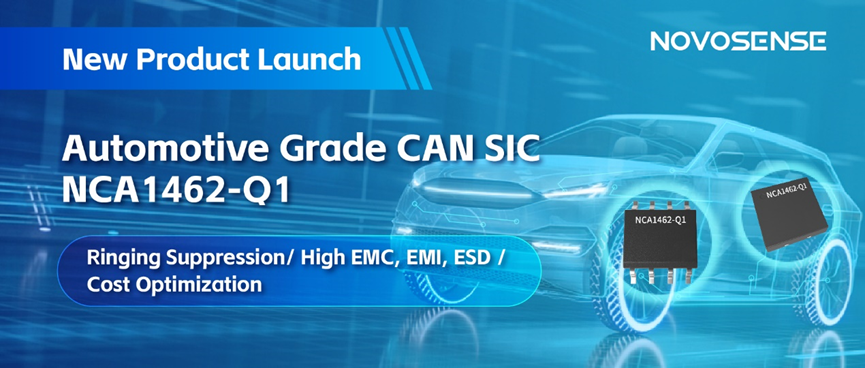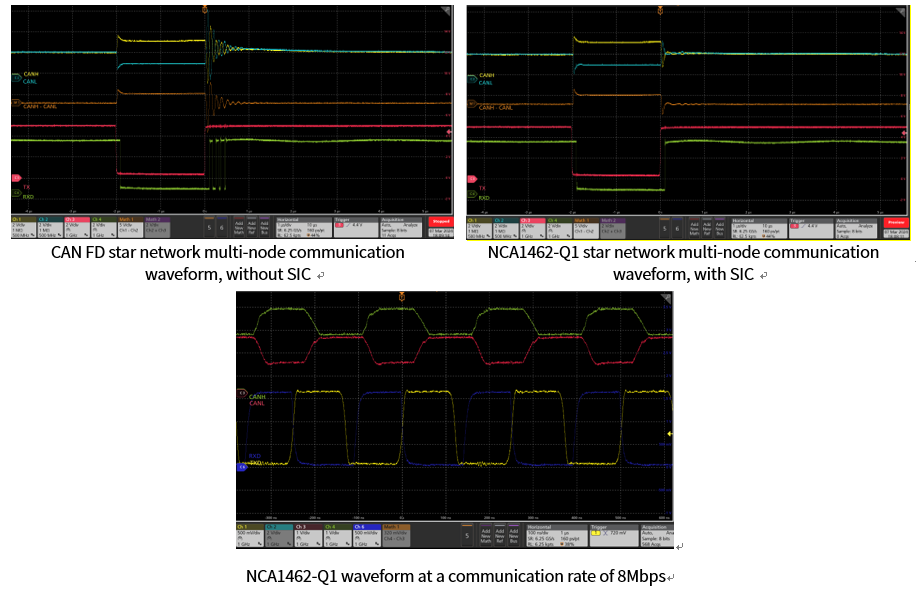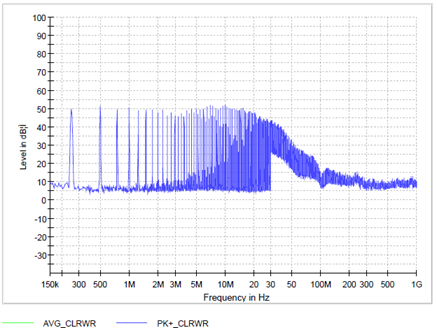2025/12/08
2025/11/05
2025/11/05
2024/03/26
NOVOSENSE announced the launch of NCA1462-Q1, an automotive-grade CAN SIC (Signal Improvement Capability) based on its proprietary innovative ringing suppression patent. Compared with the current mainstream automotive CAN FD solution, NCA1462-Q1 is further compatible with the CiA 601-4 standard on the premise of meeting the ISO 11898-2:2016 standard, and can achieve a data rate of ≥8Mbps. With NOVOSENSE's patented ringing suppression function, NCA1462-Q1 maintains good signal quality even in the case of star network multi-node connection; in addition, its ultra-high EMC performance and more flexible VIO as low as 1.8V can effectively help engineers simplify system design and create high-quality automotive communication system.

Today, intelligent connected vehicles provide drivers and passengers with a safer, more comfortable, and more economical travel experience through the integration of many innovative functions. These functions cover many aspects such as powertrain, advanced driver assistance systems, body control, lighting systems, and infotainment and safety systems. In order to realize these functions, a large number of electronic control units (ECUs) are deployed inside the vehicle. These ECUs are connected to each other through the CAN bus network in the vehicle for control and data interaction. With the increasing complexity of automotive communication networks, the current mainstream CAN FD may have signal communication failures during multi-node, long-distance, and high-speed data transmission. In order to ensure the stability and reliability of communication, the actual usage rate of CAN FD, which is rated at 5 Mbps, is often limited to less than 2 Mbps, and in order to break through the rate limitation, the introduction of SIC becomes particularly important.
Innovative ringing suppression patent significantly improves automotive communication quality
Ringing is an oscillation phenomenon that occurs when a signal is reflected multiple times on the transmission line due to impedance mismatch and other reasons during CAN bus communication. The ringing phenomenon may negatively affect the communication quality of the CAN bus and even lead to communication failure. NCA1462-Q1 utilizes NOVOSENSE's proprietary ringing suppression patent, which allows engineers to effectively reduce signal reflections in the bus and reduce the probability of ringing in multi-node and complex topologies (as shown below), while maintaining a communication transmission rate of ≥8Mbps, greatly improving the quality of automotive communication.

High EMC/EMI/ESD helps improve reliability and optimize system cost
In automotive applications with complex working conditions, harsh electromagnetic interference in the environment can be coupled to the chip CAN bus through the cable, which may lead to abnormal transmission of the CAN chip and even damage the chip. NOVOSENSE NCA1462-Q1 has world-leading anti-interference capability. Even in extremely harsh electromagnetic environments, it can still maintain normal CAN communication, laying a solid foundation for safe automotive communication. On the other hand, electromagnetic interference within the application system may also radiate externally, thus affecting the transmission of communication signals. NOVOSENSE NCA1462-Q1 is optimized for EMI based on an innovative patented architecture and tested in accordance with IEC62228-3, as shown below:

EMI test chart of NCA1462-Q1 without common mode choke
In addition, NCA1462-Q1 achieves ultra ±8kV ESD performance by optimizing the circuit structure and layout area, providing more reliable circuit protection against transient ESD threats during automotive driving, while achieving better device cost performance. With its superior EMC/ESD performance, NCA1462-Q1 can also help engineers eliminate common mode choke or TVS tubes from peripheral circuits in some designs. Furthermore, the more flexible VIO design as low as 1.8V can further save the use of LDO or level shifter in the system, helping engineers to reduce overall costs.
Packages and options
NCA1462-Q1 is available in SOP8 and DFN8 packages and is compatible with mainstream classic CAN and CAN FD transceivers in the market. NCA1462-Q1 meets AEC-Q100, Grade 1 requirements, supports a wide operating temperature range of –40°C~125°C, and provides over-temperature protection; NCA1462-Q1 supports TXD explicit timeout protection and supports remote wake-up in standby mode. Samples of the device are now available. Samples can be applied through NOVOSENSE's official website or contact the sales team (sales@novosns.com).